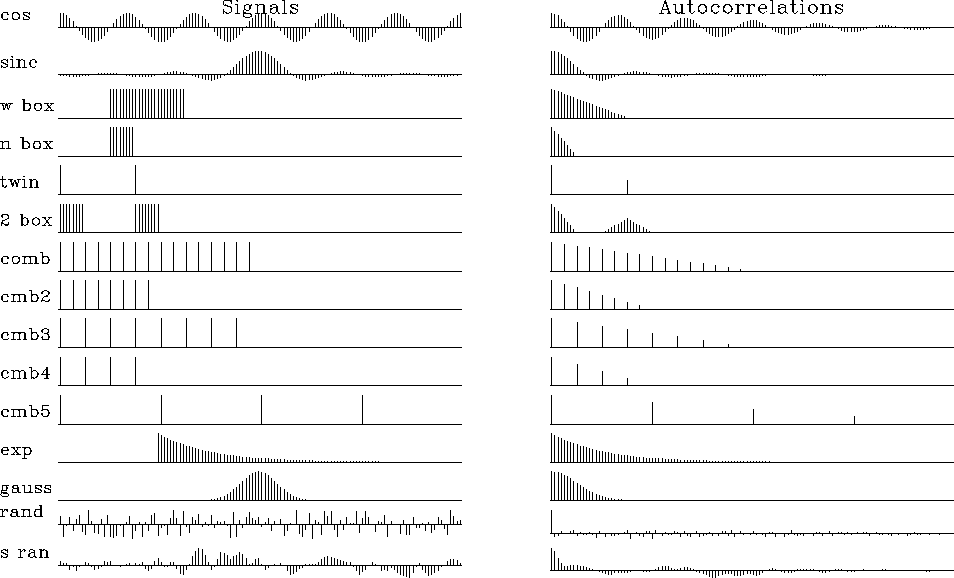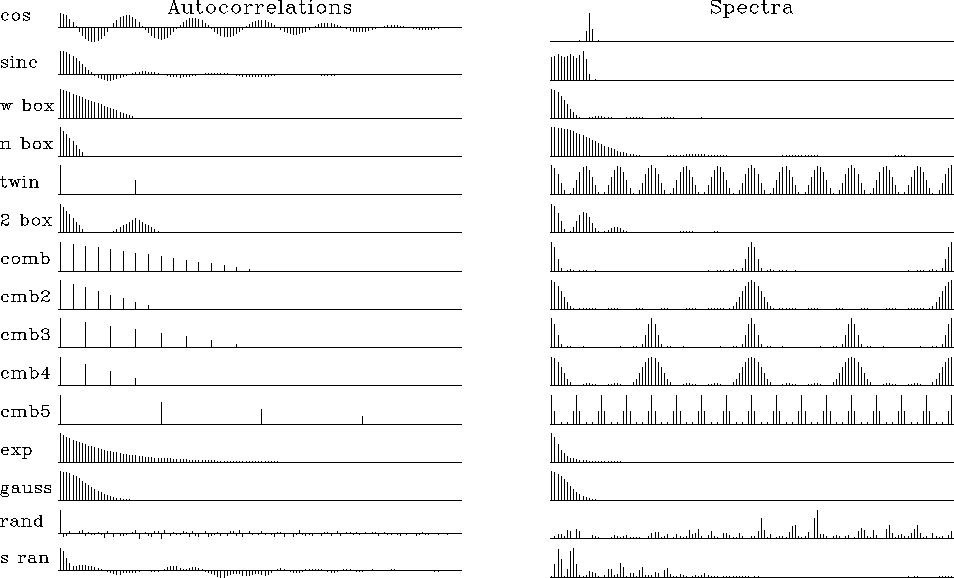 |
Figure 2 Common signals and one side of their autocorrelations.
 |
 |
The spectrum (energy) is a Cauchy function, ![]() .The curious thing about the
Cauchy function
is that the amplitude spectrum
diminishes inversely with frequency to the first power;
hence, over an infinite frequency axis, the function has infinite integral.
The sharp edge at the onset of the transient exponential
has much high-frequency energy.
.The curious thing about the
Cauchy function
is that the amplitude spectrum
diminishes inversely with frequency to the first power;
hence, over an infinite frequency axis, the function has infinite integral.
The sharp edge at the onset of the transient exponential
has much high-frequency energy.